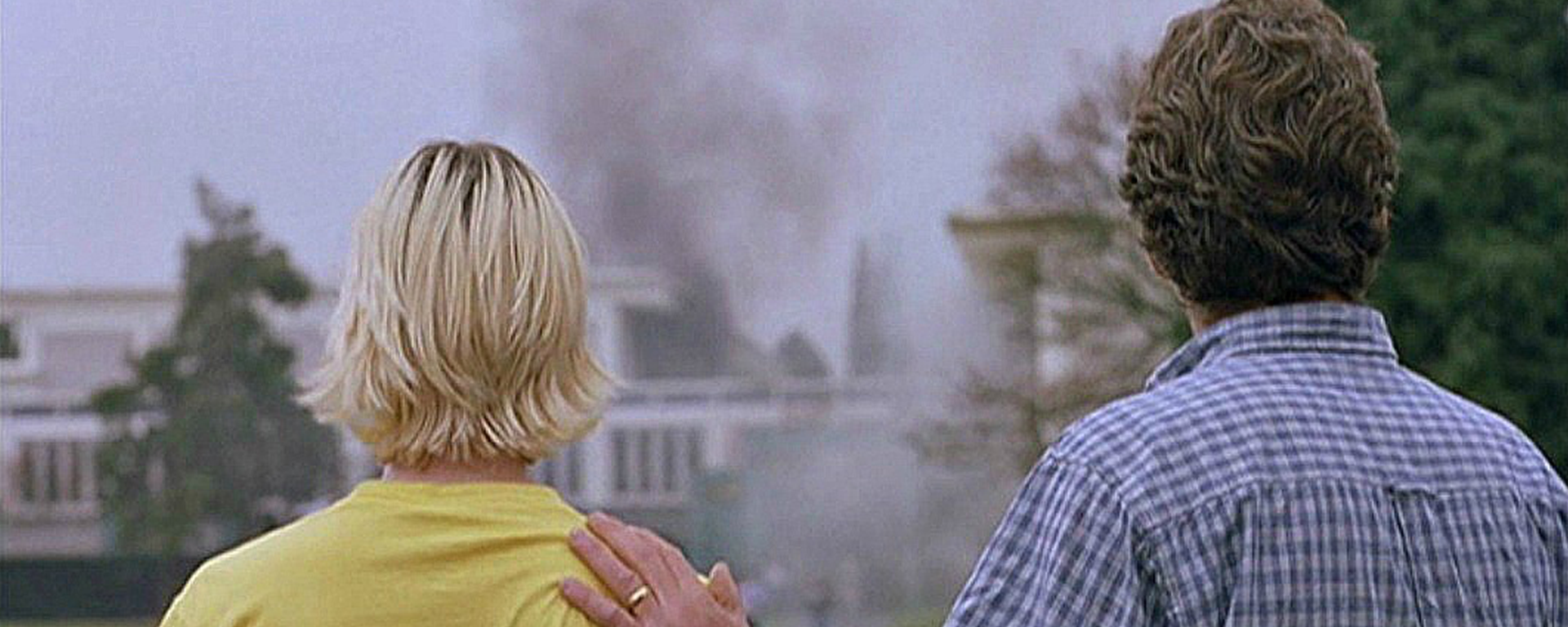
Elephant
Indie director Gus Van Sant's Elephant explores the build-up to a high school shooting from a variety of viewpoints, including those of the student killers. Scenes are repeated through the eyes of different participants, with the tension building up to the actual shooting. The film won both the Palme D'Or and the Best Director award at the Cannes Film Festival and garnered generally favourable reviews
The film came in for classification in December 2003 and the key issues noted by its examiners were: language, violence,sex references and the theme of the film – a shooting in a high school.
There are eleven uses of the word 'f**k' in the work, alongside uses of 'bitch,' 'shit' and milder language. This level of strong language required a 15, as the BBFC Guidelines at 12A allow for only 'infrequent' use. As a category defining issue, the language is mentioned in the film's BBFCinsight.
The violence in Elephant does not start until 65 minutes into this 80 minute feature, but has a huge impact, releasing the tension that has been successfully building throughout the film. The ordinariness and banality of the students' everyday lives, which we have watched with an almost detached air, are thrown immediately into sharp relief.
The violence includes the sight of several students and teachers shot to death. Several of the killings take place off-screen, but pools of blood are seen around felled bodies and the effect is strong enough to warrant a 15 classification.
The most explicit scene of violence is that in which Michelle, a student we have come to know, is shot at point blank range. We see a bloody wound appear in her chest and blood spatter up the bookshelves behind her. The film lingers on acts of sadism and psychological torture as the killers enjoy their power to the full, toying with, and terrorising their victims before killing them coldly. However, these elements of terrorisation are containable at 15 where 'violence may be strong.'
The documentary film Bowling for Columbine, directed by Michael Moore and released in 2002, explores the events behind the real-life Columbine High School massacre of April 1999. Two students at that school shot and killed 12 of their fellow pupils and wounded 24 others, before turning the guns on themselves. In his film, Moore uses recordings of 911 calls made from the school on the day of the shootings and CCTV footage of pupils hiding under desks as the killers prowled the school, to illustrate the terror inflicted on that day.
Bowling for Columbine has a clear agenda, to present the killings within their broader social and political context and to call for a tightening of firearms regulations in the United States. It was passed 15. Elephant makes no such overt arguments, relying on the impact of the storytelling to encourage audiences to draw their own conclusions. Van Sant does not suggest that parenting or society is to blame for the actions of these student killers; he makes no comment at all.
Although this theme is rather disturbing, such issues could be explored at 12A/12 depending on their treatment. It is not the theme of the school shooting on its own that placed the work at 15, but rather the use of strong language and the detail in the violence, as discussed above.
The moderate sex references include the sight of the killers, Eric and Alex, sharing a shower and kissing. The BBFC makes no distinction between heterosexual and homosexual sex and the scene would not be an issue at the 12 level which allows implied sexuality. Though the theme and the sex references were noted by examiners, these were not category defining issues and so not mentioned in the BBFCinsight.
Elephant was selected for the National Schools Film Week in 2006.